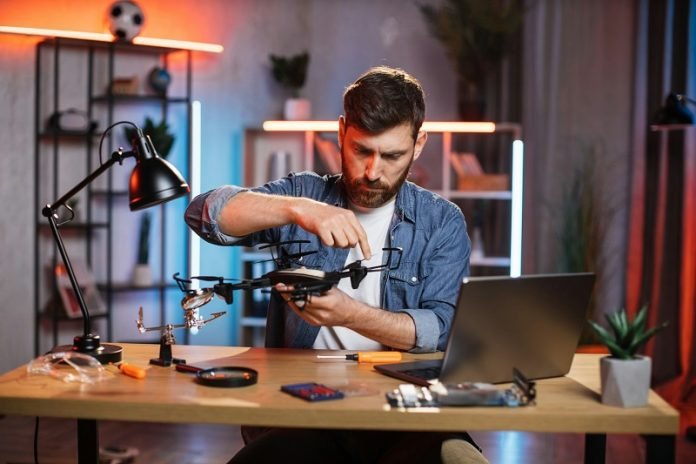
Drones, those flying gadgets we often see buzzing around in the sky, need a lot of energy to take off.
This energy comes from batteries, just like the ones in our phones, but much more powerful.
These batteries are called lithium-ion batteries, and they’re great because they can hold a lot of energy in a small space.
However, when drones take off, they use so much energy so quickly that it can wear out these batteries faster than usual.
Researchers have been looking into this problem because they want to make batteries that last longer and are safer for drones, especially those that have to lift heavy things or go really far.
A team of scientists, led by Ilias Belharouak and Marm Dixit, decided to put these batteries to the test to see how they handle the stress of taking off.
They made a special kind of battery that can charge and discharge—meaning it can get energy and use it up—really fast.
Then, they made these batteries work really hard, using up 15 times more energy than they’re supposed to, in just 45 seconds. This was to mimic how much power a drone needs to get off the ground.
After making the batteries work this hard and then using them like normal, the researchers found that the batteries couldn’t handle more than 100 of these intense workouts. In fact, they started to get tired and not work as well after about 85 times.
But here’s the interesting part: even after being put through this tough test, the batteries could still work fine for easier jobs.
They just couldn’t handle the super stressful task of lifting off again.
This discovery is pretty exciting because it means that even though these batteries might not be great for drones after a while, they could be reused for other things that don’t need so much power, like storing energy for homes or backing up power supplies.
The researchers think that more studies are needed to find even better batteries for drones, especially for those big lifts.
But in the meantime, finding a second life for these worn-out drone batteries could be a smart way to make the most of the energy and materials we have, instead of just throwing them away.
This way, batteries that once helped drones soar into the sky could help keep our lights on a little longer.
The study could be found in ACS Energy Letters.



